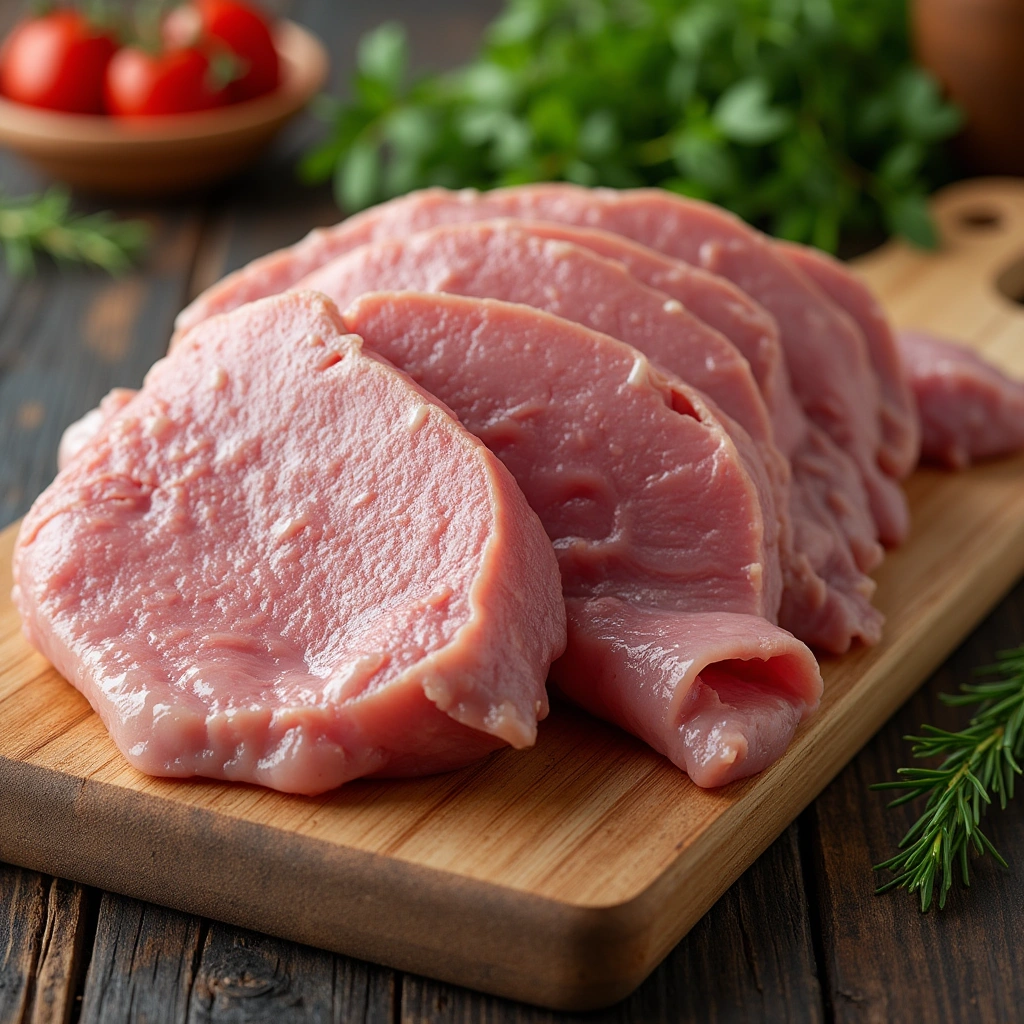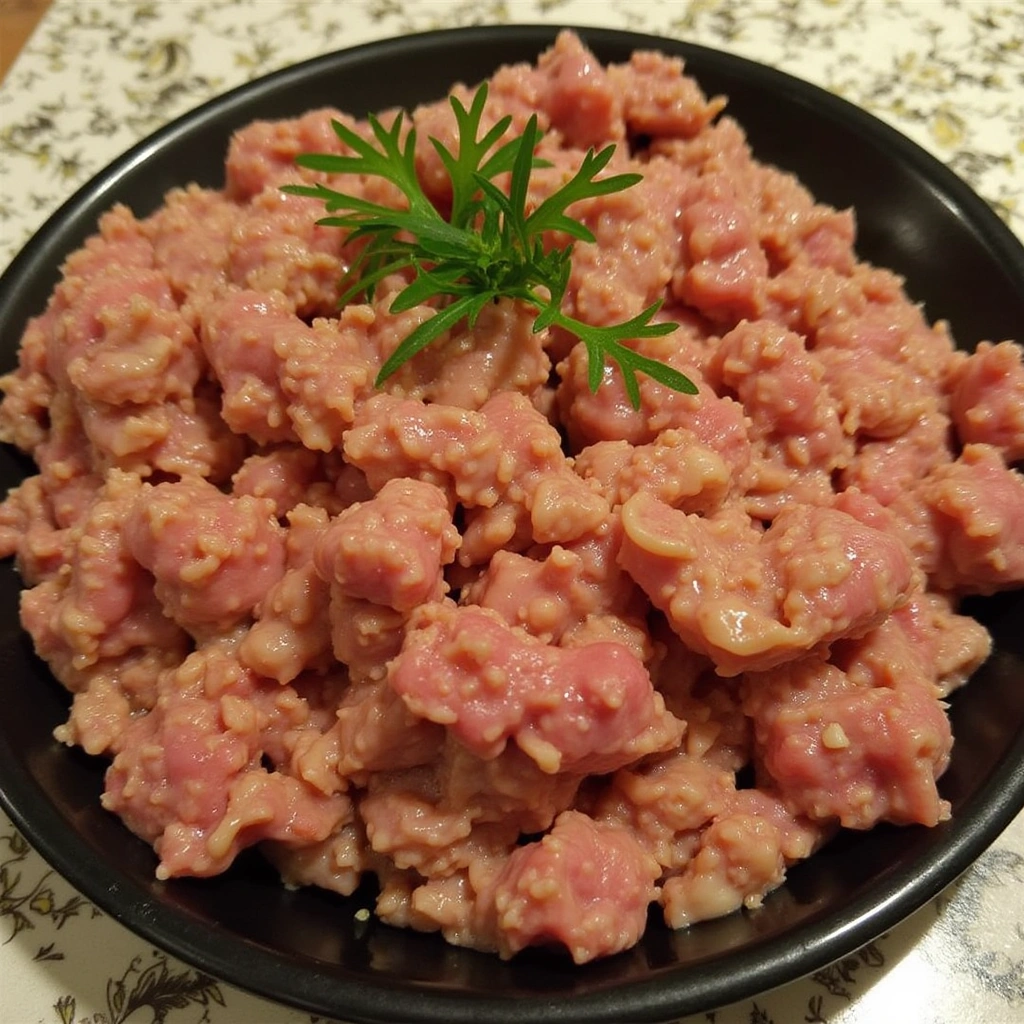Souse meat is a tangy, pickled meat dish with deep roots in Caribbean, Southern U.S., and European culinary traditions. Typically made from beef, chicken, or turkey, the meat is cooked until tender and then marinated in a vinegar-based brine infused with spices, peppers, and herbs. This process gives souse its signature tangy flavor and tender texture, making it a versatile dish enjoyed in various forms across cultures.
A Brief History of Souse Meat
Souse meat has evolved through diverse culinary traditions, reflecting the resourcefulness and creativity of the communities that embraced it. In the Caribbean, souse is often made with cow feet or chicken, flavored with hot peppers, citrus, and local spices. It is a popular dish at social gatherings and celebrations, showcasing the region’s love for bold, vibrant flavors. The use of vinegar not only enhances the taste but also acts as a preservative, making it practical in tropical climates.
In the Southern United States, souse is known as hog head souse and was a staple among early settlers. This version often utilizes cow offal, such as ears, tongue, and feet, combined with gelatin from simmering the bones. The result is a savory, jellied dish that highlights the nose-to-tail philosophy of cooking, ensuring no part of the animal went to waste. It became a comfort food, often served cold with crackers or bread.
European influences on souse meat are evident in dishes like Germany’s Sulze and the UK’s head cheese. These versions are more gelatinous, often made from pork or beef head and feet, and seasoned with spices like bay leaves, mustard seeds, and peppercorns. These dishes were born out of necessity, using inexpensive cuts of meat to create flavorful, nourishing meals.
Today, souse meat remains a beloved dish across cultures, celebrated for its rich history, bold flavors, and ability to bring people together. Whether enjoyed as a spicy Caribbean delicacy, a Southern comfort food, or a European classic, souse continues to be a testament to the ingenuity of traditional cooking.

Ingredients Needed for Authentic Souse Meat
Primary Ingredients
✅ Meat Choices:
- Pork – Pig’s feet, ears, snout, pork shoulder, or pork belly for a rich, gelatinous texture.
- Chicken – Skinless, boneless thighs or drumsticks for a leaner alternative.
- Turkey – Drumsticks or turkey wings, ideal for a hearty variation.
✅ Brining Ingredients:
- White vinegar or apple cider vinegar – Adds tang and preserves the meat.
- Fresh lemon or lime juice – Enhances acidity and balances flavors.
- Salt and sugar – Essential for taste and brine stability.
- Bay leaves – Adds depth to the flavor profile.
- Garlic and onions – Provides an aromatic base.
- Hot peppers (like Scotch bonnet or habanero) – Introduces a spicy kick.
These key ingredients create the perfect balance of tangy, savory, and spicy flavors, ensuring your souse meat is both traditional and delicious!
Step-by-Step Guide to Making Souse Meat
Step 1: Prepare the Meat
- Clean the meat thoroughly with lime juice and vinegar to remove any impurities and enhance freshness.
- If using pork, parboil it for 10–15 minutes, then drain and rinse to remove excess fat and scum. This step helps create a cleaner-tasting souse.
- For chicken or turkey, rinse well and trim any excess skin or fat.
Step 2: Slow Cook Until Tender
- Place the meat in a large pot, covering it with water.
- Add sliced onions, garlic, bay leaves, salt, and black pepper for rich seasoning.
- Bring to a rolling boil, then lower the heat and simmer for 2–3 hours until the meat is fork-tender.
- If making a broth-heavy souse, consider adding a soup bone for extra depth of flavor.
Step 3: Prepare the Brine
- In a large mixing bowl, combine vinegar, lemon juice, salt, sugar, and spices.
- Add thinly sliced onions, hot peppers, and fresh thyme to enhance flavor.
Step 4: Marinate the Meat
- Remove the cooked meat from the pot and let it cool slightly.
- Cut into bite-sized pieces and place them in a deep dish or container.
- Pour the prepared brine over the meat, ensuring it’s fully submerged.
- Refrigerate for at least 24 hours, allowing the flavors to develop.
Step 5: Serve and Enjoy!
- Serve chilled, accompanied by crackers, bread, or fresh salads.
- For a heartier meal, enjoy it with chicken over rice.

Regional Variations of Souse Meat
Souse meat varies by region, with each culture adding its own unique flavors and ingredients.
1. Caribbean Souse 🌶️
- A staple in Bahamian, Trinidadian, and Jamaican cuisine.
- Made with pork, chicken, or turkey, simmered until tender, then soaked in a tangy vinegar brine.
- Uses scotch bonnet peppers for a fiery kick.
- Often includes pickled cucumbers, carrots, and bell peppers for added crunch and freshness.
- Typically served cold with Johnny cakes or crackers.
2. Southern U.S. Hog Head Souse 🐖
- A soul food classic, originating from Appalachia and the Deep South.
- Traditionally made using pig’s head, feet, and other offal, giving it a rich, gelatinous texture.
- Sometimes set in gelatin, similar to head cheese, creating a firm, sliceable dish.
- Seasoned with vinegar, black pepper, and red pepper flakes, making it savory and slightly tangy.
- Often eaten on crackers or sandwiches.
3. European Sulze (Head Cheese) 🇩🇪
- A German and Eastern European variation of souse.
- Uses boiled pork or veal suspended in natural gelatin, creating a cold, jelly-like texture.
- Seasoned with vinegar, mustard, onions, and herbs.
- Typically served with rye bread, mustard, or pickles.
Souse Meat vs. Potted Meat: What’s the Difference?
Though both are preserved meats, they have distinct characteristics:
| Feature | Souse Meat | Potted Meat |
|---|---|---|
| Preservation | Vinegar-based pickling | Fat-based preservation |
| Texture | Firm, slightly chewy | Soft, spreadable |
| Flavor | Tangy, spicy | Savory, rich |
Health Benefits of Souse Meat
Souse meat is not only flavorful but also packed with nutritional benefits that make it a great addition to various diets.
- 1. High in Collagen – Supports Joint and Skin Health
- Since souse is often made using pig’s feet, ears, or turkey wings, it is naturally high in collagen.
- Collagen is essential for joint health, skin elasticity, and overall connective tissue strength.
- Regular consumption may help reduce joint pain and support healthy aging.
- 2. Low in Carbs – Perfect for Keto Diets
- Souse meat contains little to no carbohydrates, making it an excellent choice for low-carb and ketogenic diets.
- Unlike processed meats that may contain fillers, homemade souse is pure protein and fat, providing long-lasting energy.
- The high protein content also aids in muscle maintenance and weight loss.
💡 Tip: If watching sodium intake, rinse the meat before eating or use a low-sodium vinegar.

Best Ways to Serve Souse Meat
- 1. With Crackers – A Traditional Favorite
- The most common way to enjoy souse is cold with crackers.
- The crunchy texture of crackers complements the tangy, tender meat, making it a perfect snack or appetizer.
- 2. Over Rice – A Hearty Meal Option
- Pairing souse meat with chicken over rice makes for a nutritious, filling meal.
- The vinegar-brined meat balances the neutral flavor of rice, creating a savory, well-rounded dish.
- 3. In Sandwiches – A Flavorful Twist
- Stuff souse meat into a crusty baguette or sandwich roll.
- Add mustard, lettuce, and pickled onions for extra flavor.
- This option works well for lunches, picnics, or quick meals on the go.
Frequently Asked Questions (FAQs)
1. Can I make souse meat with turkey?
Absolutely! Turkey wings are a fantastic alternative to pork, offering a leaner option with just as much flavor. Many Caribbean and Southern cooks use turkey drumsticks or wings for a lighter take on traditional souse. The preparation method remains the same, with the turkey meat slow-cooked until tender and then marinated in a tangy brine.
2. How long does homemade souse last?
When stored properly in an airtight container, homemade souse meat stays fresh for 5–7 days in the refrigerator. The vinegar-based brine acts as a natural preservative, keeping the meat flavorful and safe to eat. However, always check for any signs of spoilage, such as an off smell or slimy texture, before consuming.
3. Is souse meat keto-friendly?
Yes! Souse meat is naturally low in carbohydrates, making it an excellent choice for keto and low-carb diets. Since it’s made from protein-rich meat without added sugars or starches, it fits perfectly into a ketogenic meal plan. Pair it with avocado, leafy greens, or a low-carb side dish for a balanced meal.
4. Can I freeze souse meat?
While souse meat can be frozen, the texture may change due to the vinegar brine. Freezing can cause the meat to become slightly mushy once thawed. If you choose to freeze it, store it in a sealed container with some brine and consume it within 1–2 months for the best quality.
5. What’s the difference between souse and head cheese?
- Souse is pickled in vinegar, giving it a tangy, slightly acidic flavor.
- Head cheese is set in gelatin, creating a firm, jelly-like consistency.
Both dishes use similar cuts of meat but differ in preparation and texture.
Final Thoughts: Why You Should Try Souse Meat
Souse meat is a tangy, flavorful dish enjoyed across cultures. Whether you prefer the spicy Caribbean version, the Southern hog head souse, or the European head cheese, it’s a must-try for adventurous food lovers.
For more meat preservation techniques, check out canned meat recipes and explore other meat-based dishes on Recipes Briny.

